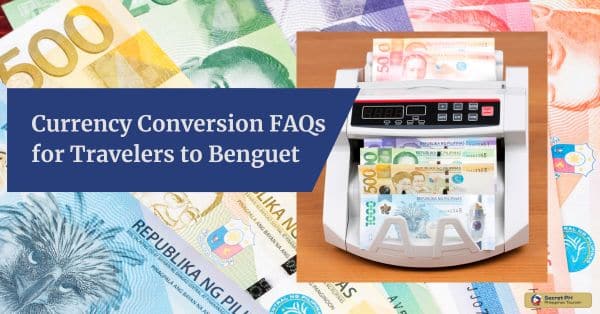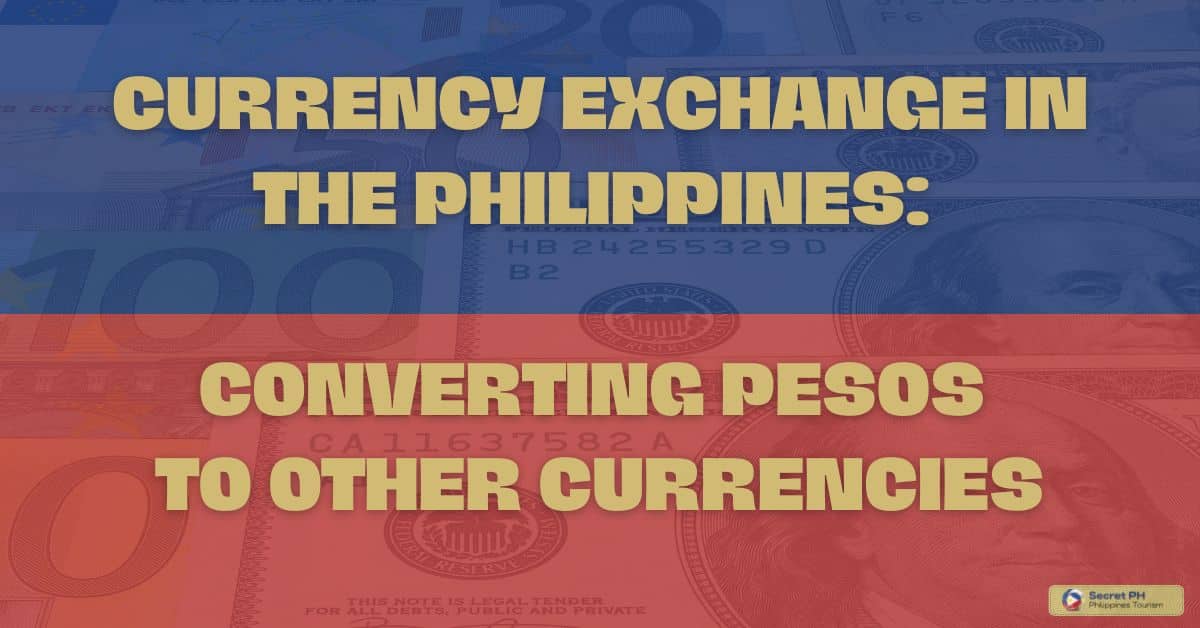The Philippine Peso (PHP) is the official currency of the Philippines and has been a key factor in the country’s economic performance over the years. With recent changes to the global economy and rising geopolitical tensions, it is important to take a closer look at the current state of the Philippine Peso as well as its future prospects.
Reviewing the historical trends of the Peso, examine the impact of economic and political forces on its value, explore potential risks and opportunities for investors, and offer predictions on where the currency is headed in the near future. By understanding these factors, investors can make more informed decisions about their investments in Philippine Peso.
In this article, we also evaluate potential risks and opportunities and offer insights into whether the peso is a wise investment choice.
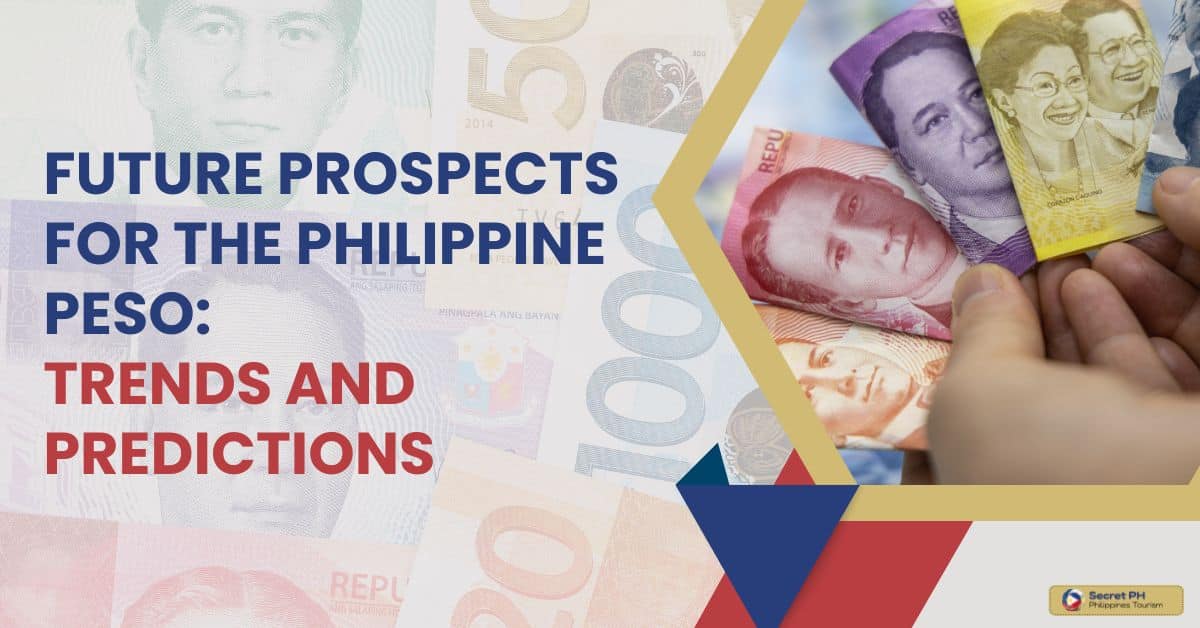
Historical Trends: A Look Back at the Peso’s Performance
The Philippine peso has experienced a lot of volatility over the years. In the early 2000s, it was one of the strongest currencies in Asia and its value against the U.S. dollar surged to above 50 PHP per USD 1 in late 2005. Since then, however, its strength has declined steadily due to a number of factors.
The global financial crisis of 2008-2009 was a major blow to the peso, with its value declining from around 45 PHP per USD 1 in early 2008 to around 43 PHP per USD 1 by mid-2009. From then until 2015.
The currency remained relatively stable at around 40 to 41 PHP per USD 1 before making a rally in 2016 to nearly 48 PHP per USD 1 by the year’s end. Since then, however, it has been on a steady decline, with its value falling to around 51 PHP per USD 1 in early 2018 and continuing to weaken since then.
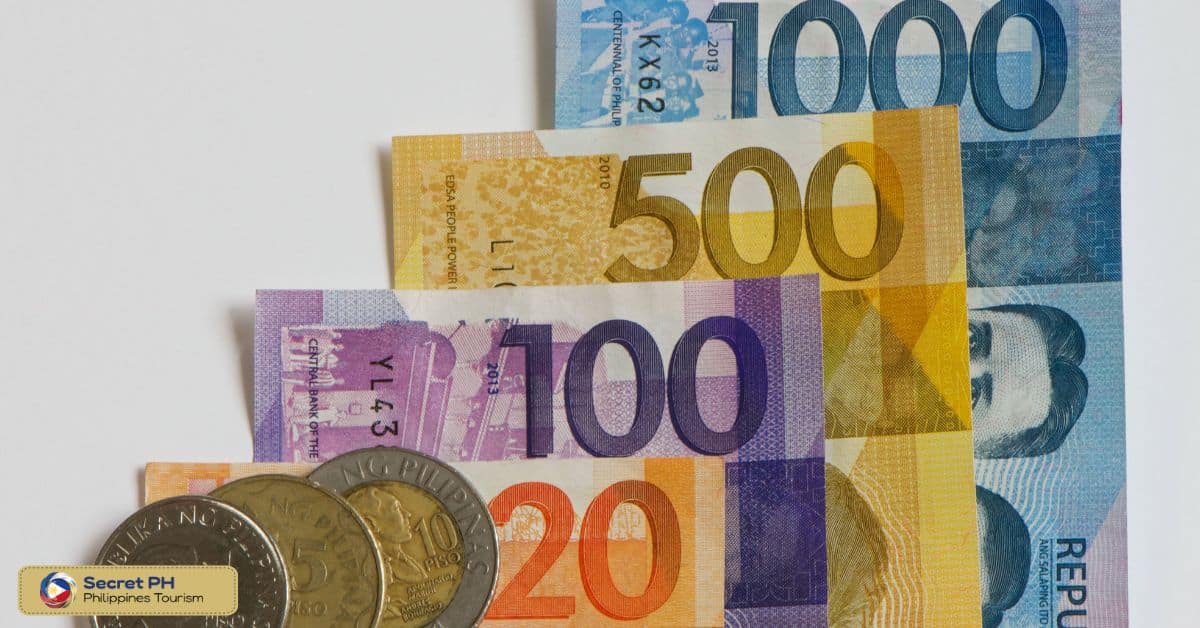
Current State of the Philippine Peso: Factors Affecting its Value
The current state of the Philippine Peso (PHP) is largely determined by a number of factors. These include domestic economic policies, global market forces, and geopolitical tensions. In this article, we will take a closer look at these factors and discuss what they mean for the future of the peso’s value.
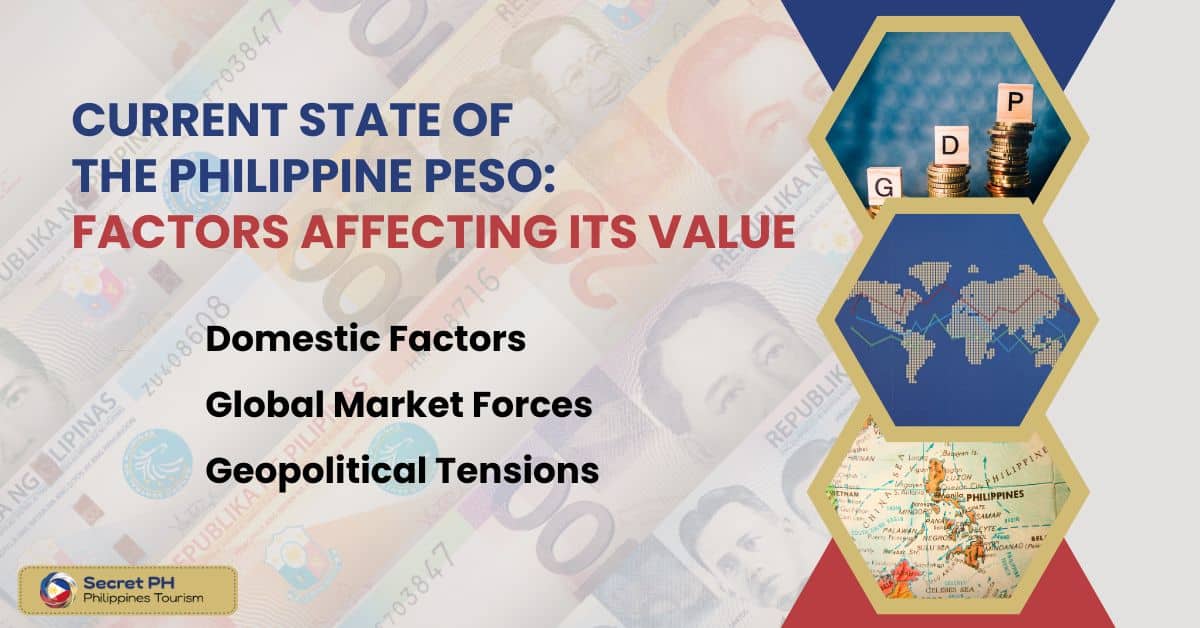
Domestic Factors
The state of the Philippine economy is a key driver of the peso’s value. Inflation, GDP growth, and other economic indicators are all important for determining the currency’s strength relative to other currencies. Additionally, political stability is also an important factor as it can have a direct impact on investor confidence and currency performance.
Global Market Forces
The global economic environment can also affect the peso’s value. The U.S. dollar, for instance, is an important factor as it is used as a benchmark in currency trading. Changes in the value of the U.S. dollar can cause fluctuations in other currencies, including the Philippine peso.
Geopolitical Tensions
Geopolitical tensions can have a significant impact on global markets and currencies, including the Philippine peso. Changes in trade agreements or diplomatic relations between countries can affect currency values, as investors react to news of political developments.
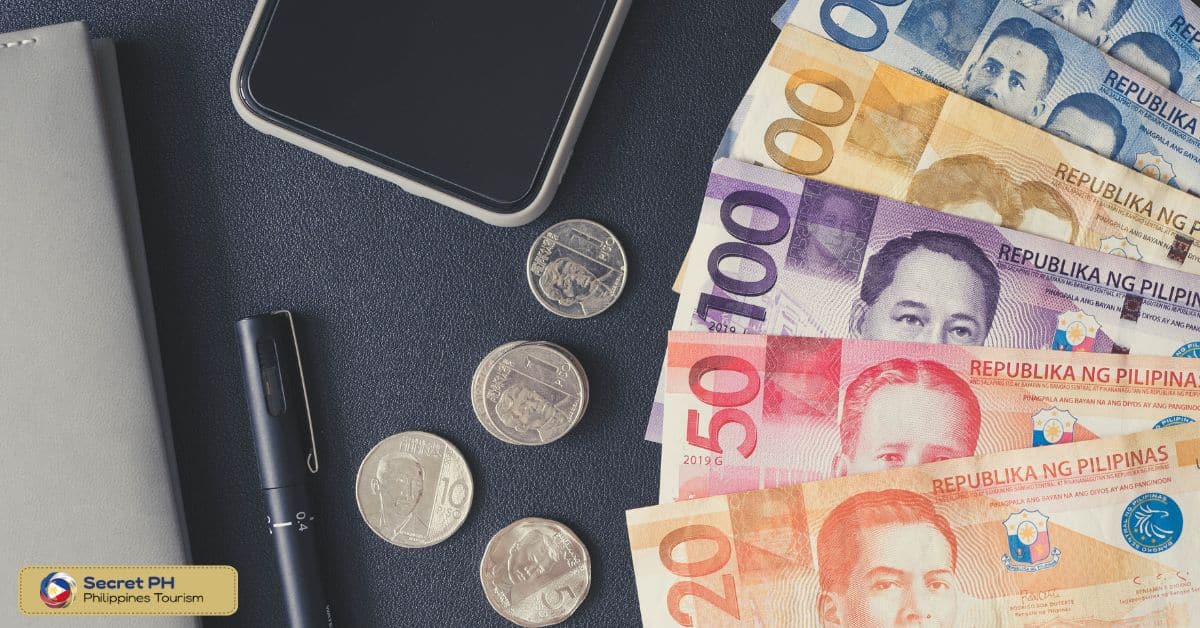
Economic and Political Landscape: Implications for the Peso
The global economic and political landscape can have a significant impact on the value of the Philippine Peso. From domestic policies to international relations, all of these factors play an important role in determining its long-term prospects.
Here, we will take a closer look at some of the major trends affecting the peso and provide predictions for its future. By understanding these influences, investors can make more informed decisions when investing in the currency.
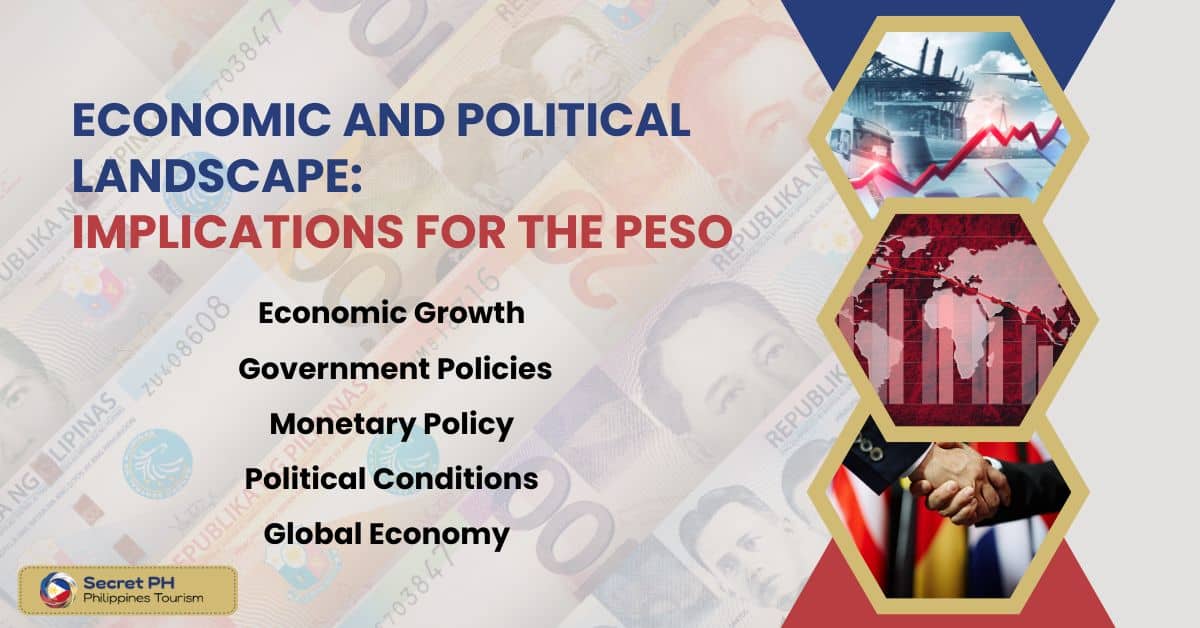
Economic Growth: A strong economy is essential for a healthy currency, and the Philippines has been making steady progress in recent years. GDP growth has averaged more than 6% over the past five years, while inflation has remained low and stable. These positive indicators suggest that the peso should remain relatively strong against other currencies in the near future.
Government Policies: The government of the Philippines has taken steps to improve its economic outlook. By introducing policies that promote investment, encourage domestic consumption, and create jobs. These measures should help to further bolster the peso’s value in the coming years.
Monetary Policy: The Central Bank of the Philippines (BSP) has been proactive in managing the country’s monetary policy to ensure that inflation remains low and manageable. This should help encourage further investment in the Philippine peso and keep its value stable going forward.
Political Conditions: The political situation in the Philippines is generally stable, with no major upheavals in recent times. This has helped create an environment of confidence in the economy and encouraged investment, which should continue to support the peso going forward.
Global Economy: The global economic environment is a key factor that affects all currencies, including the Philippine Peso. Factors such as U.S.-China trade relations and Brexit could have a significant impact on the value of the peso, and investors should be mindful of these influences.
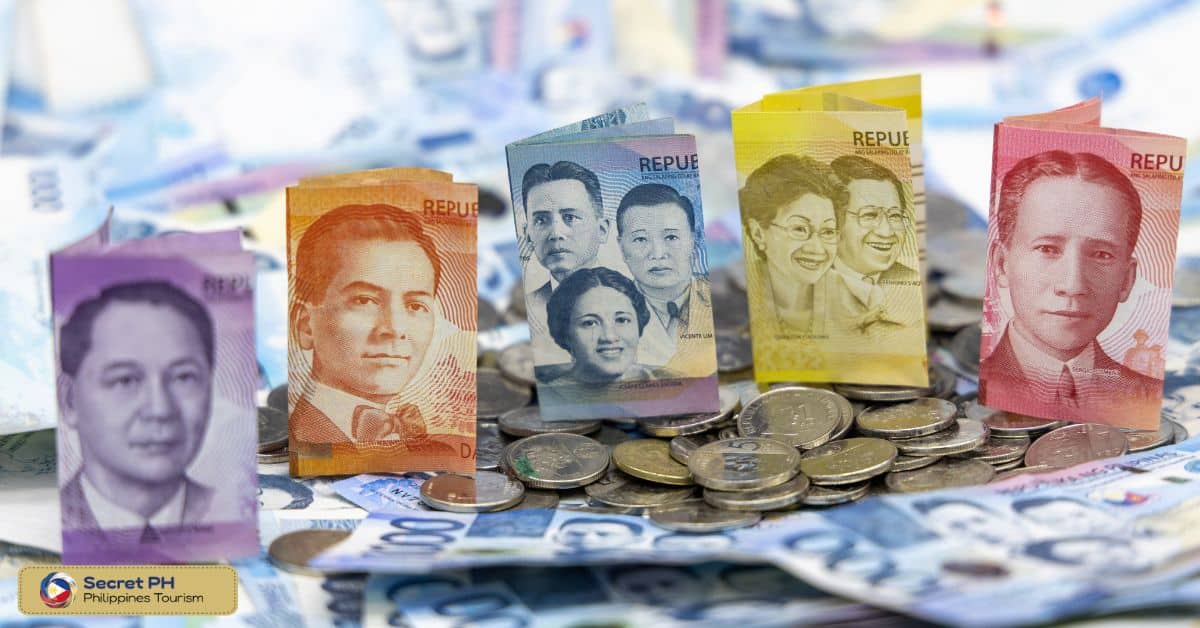
Future Projections: Forecasts and Predictions for the Philippine Peso
Looking to the future, there are a number of factors that could impact the value of the Philippine peso. Economic policies from the Philippine government and global economic conditions will be key determinants in determining its performance.
Inflation, GDP growth, and other economic indicators should all be monitored closely for clues about where the currency is headed. Geopolitical tensions such as trade agreements, diplomatic relations, and other political developments should be taken into consideration when making predictions about the peso.
The outlook for the Philippine peso appears to be positive in the near term. The currency is expected to remain relatively stable over the coming months with minimal fluctuations. However, investors should keep an eye on changes in the economic and political landscape.
As well as geopolitical developments, to ensure they remain informed of any potential risks or opportunities associated with the Philippine peso. By understanding these factors, investors can make more informed decisions about their investments in Philippine Peso.
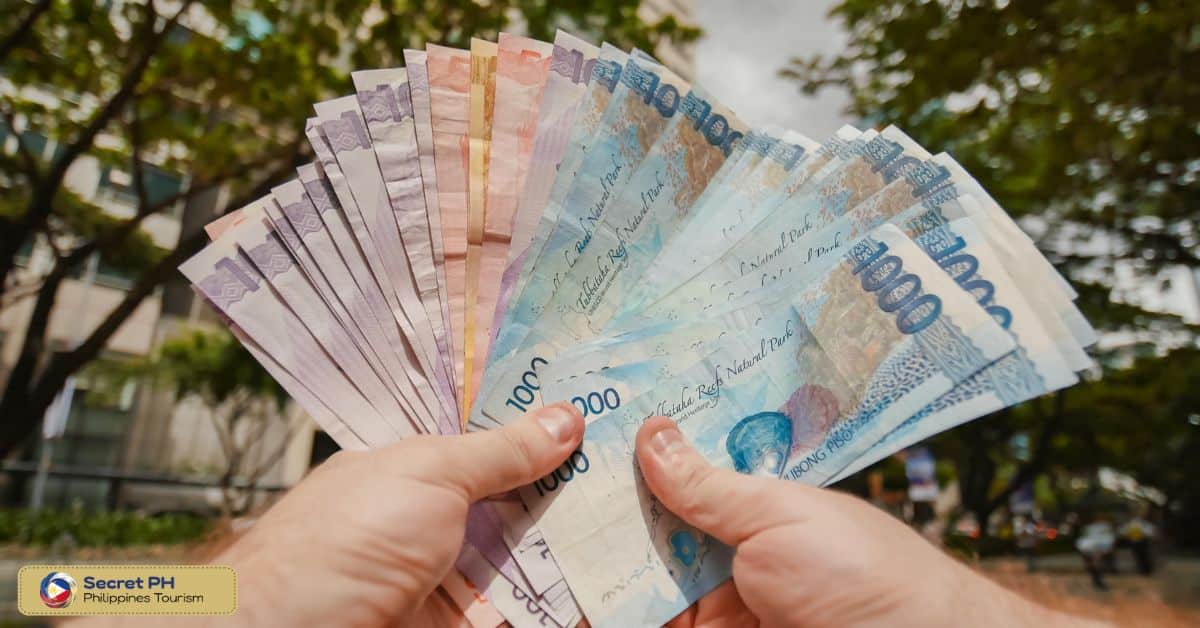
Potential Risks and Opportunities: Factors that Could Impact the Peso’s Value
As a currency trader, it is essential to monitor the factors that could impact the value of the currency you’re trading. The Philippine Peso (PHP) is no exception. Here, we will discuss the potential risks and opportunities that could affect the Peso’s value.
Risks
The value of a country’s currency is subject to a multitude of internal and external factors. These factors can lead to potential risks and the peso is no exception. Understanding these factors is critical in managing and mitigating risks.
Here, are the potential risks that could impact the peso’s value:
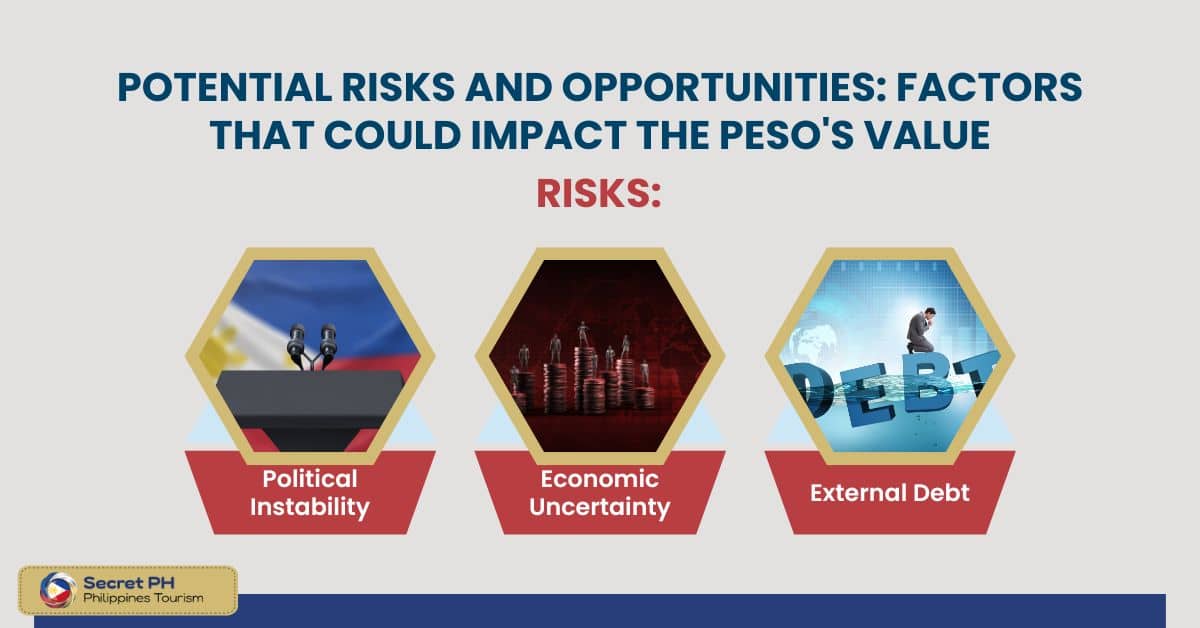
Political Instability
Political tensions can cause uncertainty in the market, leading to a decrease in the confidence of investors. The ongoing tensions between China and the Philippines over the South China Sea could impact the Peso negatively. Any significant changes in government policies or the possible impeachment of the current president could also affect investor sentiment, leading to currency fluctuations.
Economic Uncertainty
The current economic uncertainty caused by the COVID-19 pandemic has been a significant concern for the Philippine economy. The disruption in the global supply chain led to a decline in exports, which could affect the Peso’s value. The decrease in foreign demand can lead to a decline in the currency’s value, resulting in a loss for traders.
External Debt
The Philippines has a significant external debt that could impact its economy negatively. The country’s external debt-to-gross domestic product (GDP) ratio is around 26%, which is manageable. But could increase if the government borrows more to address the pandemic’s economic effects. An increase in the external debt could lead to a decrease in the Peso’s value, resulting in a loss for traders.
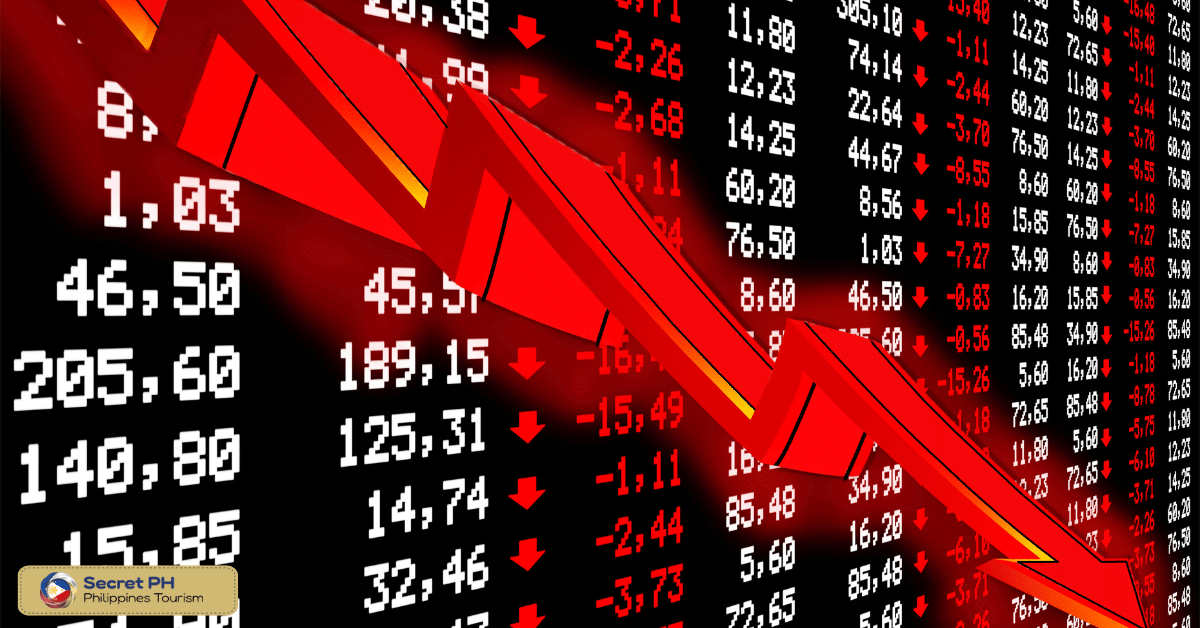
Opportunities
There are potential opportunities in the Philippine Peso that can have a significant effect on its value in the global market. The following discussion will explore key factors that could impact the Peso’s value and highlight the opportunities that may arise from these volatile market conditions. By staying informed, investors can make educated decisions about their financial portfolios and take advantage of potentially lucrative opportunities.
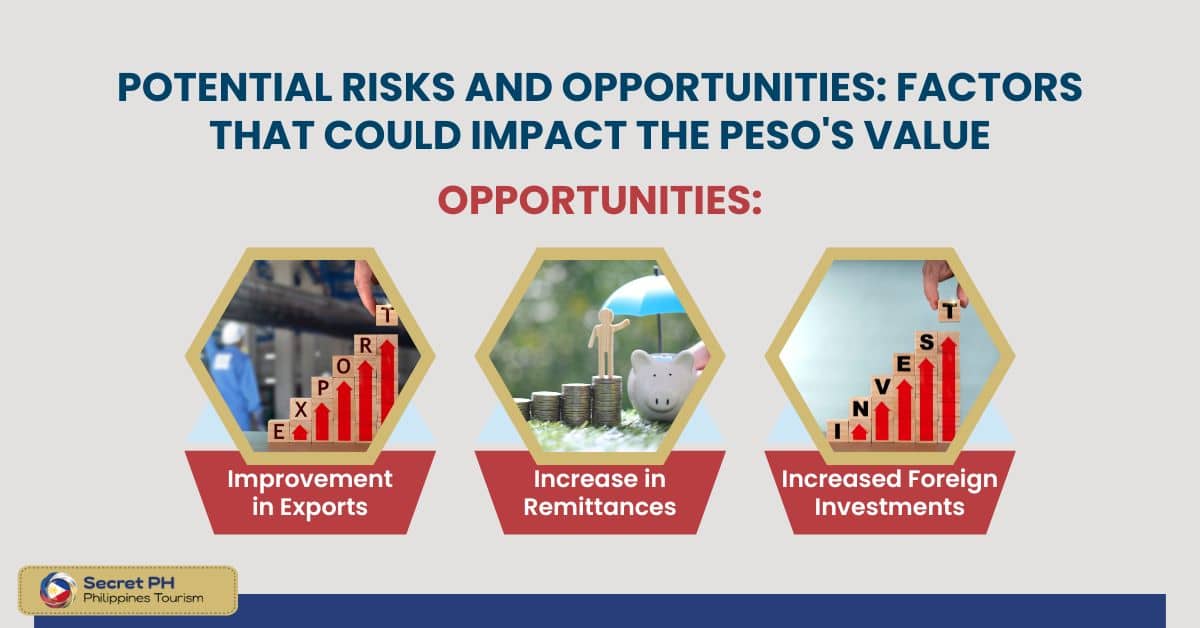
Improvement in Exports
The Philippines has a relatively diversified export market compared to other Southeast Asian countries. The country’s top exports include semiconductors, electronic products, and machinery. An increase in the demand for these products from other countries could result in an increase in the value of the Peso. Currency traders can benefit from this by going long on the Peso.
Increase in Remittances
The Philippines is known for its overseas Filipino workers (OFWs) who send money back to their families. In 2019, remittances amounted to $30.1 billion, making it a significant contributor to the country’s economy. Any increase in the remittances could positively impact the Peso’s value, providing opportunities for currency traders to go long on the currency.
Increased Foreign Investments
Foreign investment in the Philippines has been increasing in recent years, particularly in the manufacturing and service sectors. An increase in foreign investment could lead to an increase in the demand for the Peso. This presents an opportunity for currency traders to benefit from the appreciation of the currency by going long on the Peso.
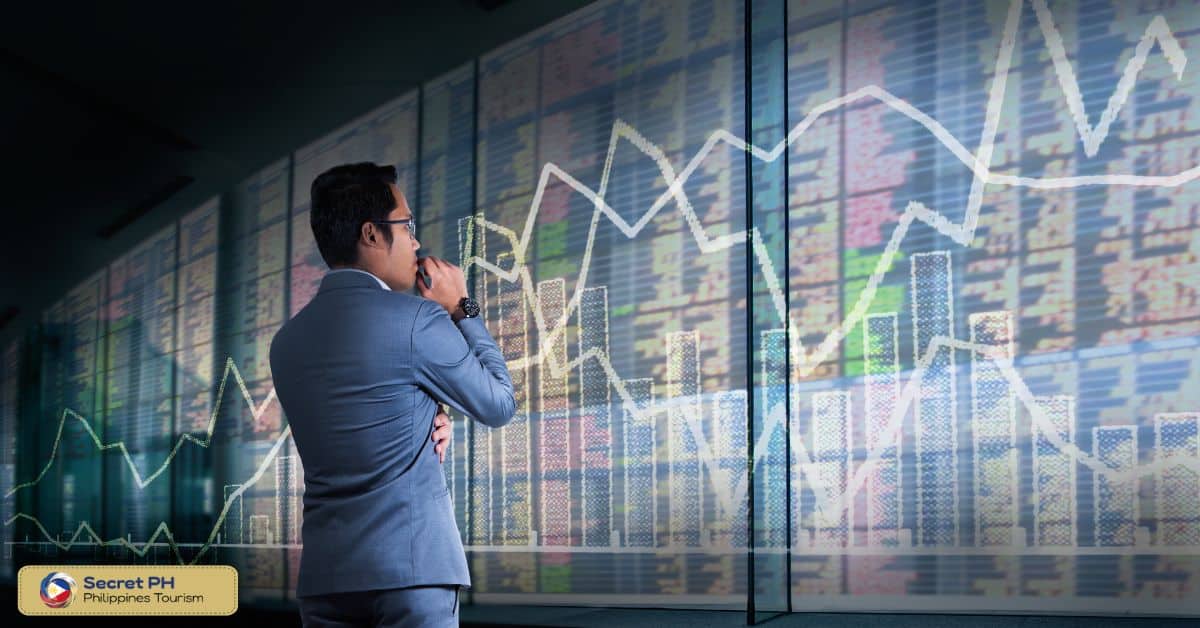
Investment Outlook: Is the Peso a Good Investment?
The Philippine Peso (PHP) is an attractive investment option for those looking to diversify their portfolio and capitalize on the current undervalued exchange rate. The currency has experienced some volatility in recent years due to factors such as changing economic policies, global market forces, and geopolitical tensions.
Investors should also consider potential risks associated with the currency and take a long-term view when making their investment decisions. The Philippine Peso has proven to be a reliable currency option for investors looking to capitalize on its undervalued exchange rate while mitigating potential risks. Investors should carefully assess their investment goals and risk tolerance before making any decisions about investing in the Philippine Peso.
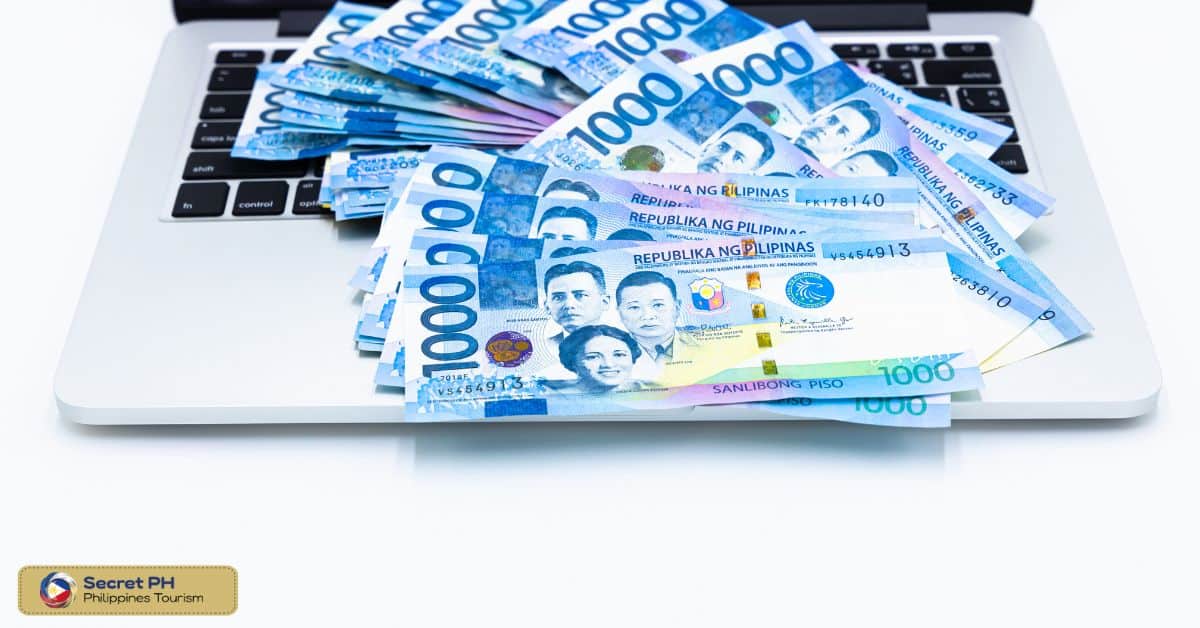
In conclusion
The Philippine Peso has been a reliable currency over the years and is currently undervalued relative to other major currencies. Despite some volatility due to changes in global economic policies, market forces, and geopolitical tensions, it remains an attractive investment option.
With the right approach, investing in the peso can provide an interesting opportunity to diversify one’s portfolio. And benefit from a potential upside in the currency’s value as the economy improves. Ultimately, investors should carefully assess their investment goals and risk tolerance before making any decisions about investing in the Philippine Peso.

